When it comes to culinary adventures, few cuisines captivate the senses like Japanese cuisine does. The delicate balance of flavors, the artistic presentation, and the emphasis on fresh ingredients make Japanese dishes a feast for both the eyes and the taste buds. Whether you’re an experienced home cook or just starting your culinary journey, these top 20 Japanese recipes will transport you to the vibrant world of Japanese gastronomy right from the comfort of your own kitchen.
Table of Contents
1. Sushi Delights
Sushi, the jewel of Japanese cuisine, is an artful masterpiece that requires precision and a reverence for ingredients. With vinegared rice, fresh fish, and a symphony of flavors, sushi offers an experience that’s as delightful to create as it is to savor.
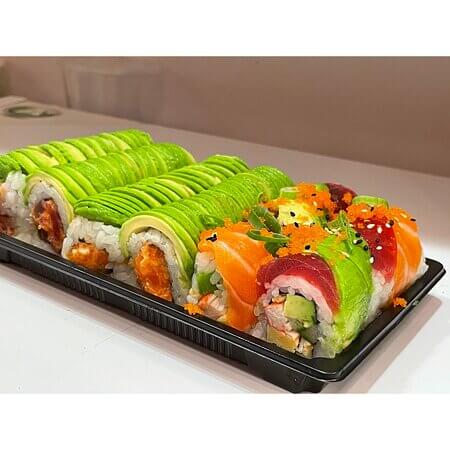
| Ingredients | Steps |
|---|---|
| – Sushi rice – Fresh fish/seafood – Nori (seaweed) – Wasabi – Soy sauce – Pickled ginger | 1. Cook sushi rice according to package instructions and allow it to cool. 2. Prepare the fish or seafood by slicing it into thin, manageable pieces. 3. Lay a sheet of nori on a bamboo sushi mat. 4. Moisten your hands and spread a thin layer of sushi rice over the nori, leaving a border at the top. 5. Add a small amount of wasabi to the center of the rice and place your choice of fish or seafood on top. 6. Roll the sushi tightly using the bamboo mat, applying gentle pressure to create a compact roll. 7. Use a sharp knife to slice the roll into bite-sized pieces. 8. Serve with soy sauce and pickled ginger on the side. 9. Enjoy the harmony of flavors and textures in every bite. |
2. Tempura Temptation
Tempura, a hallmark of Japanese cuisine, presents a delightful contrast of crispy and tender textures. This light and airy batter-coated dish features an array of vegetables and seafood that are fried to perfection.
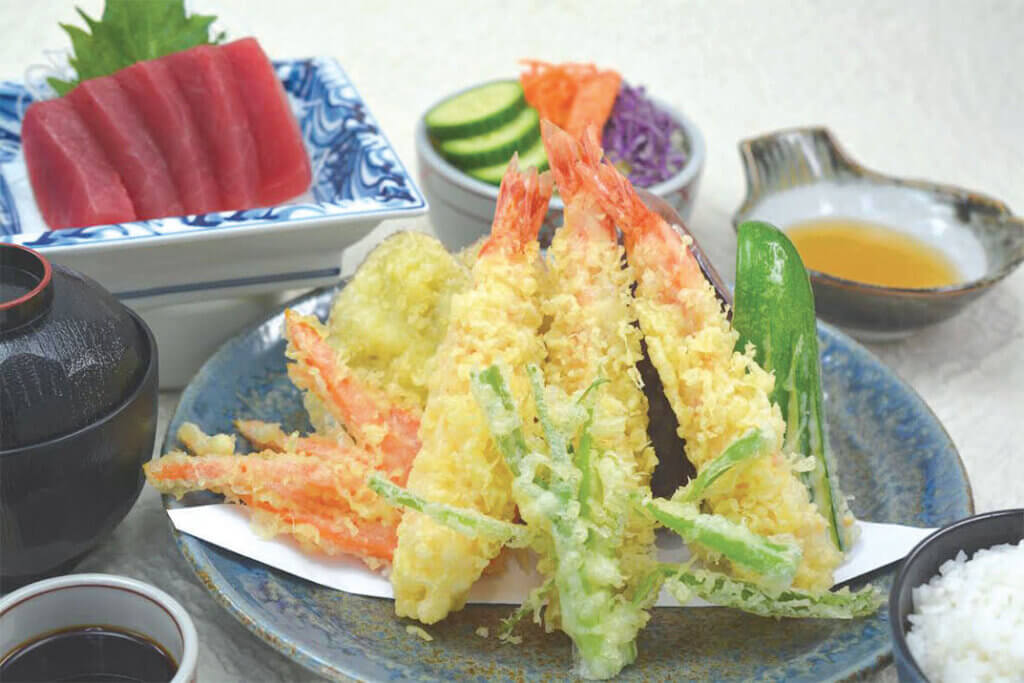
| Ingredients | Steps |
|---|---|
| – Assorted vegetables (sweet potato, bell pepper, zucchini) – Seafood (shrimp, squid) – Tempura batter mix – Vegetable oil for frying | 1. Prepare the ingredients by cleaning, peeling, and deveining as needed. Pat them dry to prevent excess moisture. 2. Heat the vegetable oil in a deep fryer or a heavy-bottomed pot to around 350°F (175°C). 3. In a bowl, prepare the tempura batter mix according to the package instructions. The batter should be slightly lumpy for a crispy texture. 4. Dip the prepared vegetables and seafood into the batter, coating them evenly. 5. Carefully place the coated items into the hot oil, ensuring they don’t stick together. 6. Fry until the tempura turns golden brown and crispy. Use a slotted spoon to transfer them to a plate lined with paper towels. 7. Serve the tempura immediately, while it’s still hot and crispy. Enjoy the contrast between the delicate interior and the crunchy exterior. |
3. Teriyaki Triumph
Teriyaki, a marriage of sweet and savory, showcases the Japanese flair for balanced flavors. This glaze enhances proteins like chicken, salmon, and tofu, creating a dish that’s both comforting and exquisite.

| Ingredients | Steps |
|---|---|
| – Chicken, salmon, or tofu – Soy sauce – Mirin – Sugar – Sake | 1. In a bowl, mix soy sauce, mirin, sugar, and sake to create the teriyaki sauce. 2. If using chicken or salmon, marinate the pieces in the sauce for about 30 minutes to an hour. For tofu, pat it dry and let it sit for a while to remove excess moisture. 3. Heat a pan or grill over medium-high heat. Add a small amount of oil to prevent sticking. 4. Place the marinated protein in the pan or on the grill. Cook until the first side caramelizes and forms grill marks. 5. Flip the protein and brush the cooked side with more teriyaki sauce. Cook until the other side is caramelized and fully cooked. 6. Remove from heat and let it rest for a moment before serving. 7. Drizzle some of the reserved teriyaki sauce over the cooked protein before serving. 8. Pair your teriyaki creation with steamed rice and perhaps some steamed vegetables for a complete meal. |
4. Ramen Reverie
Ramen, the iconic Japanese noodle dish, has taken the world by storm. With its rich broth, tender noodles, and an array of toppings, ramen offers a satisfying and soul-warming experience.
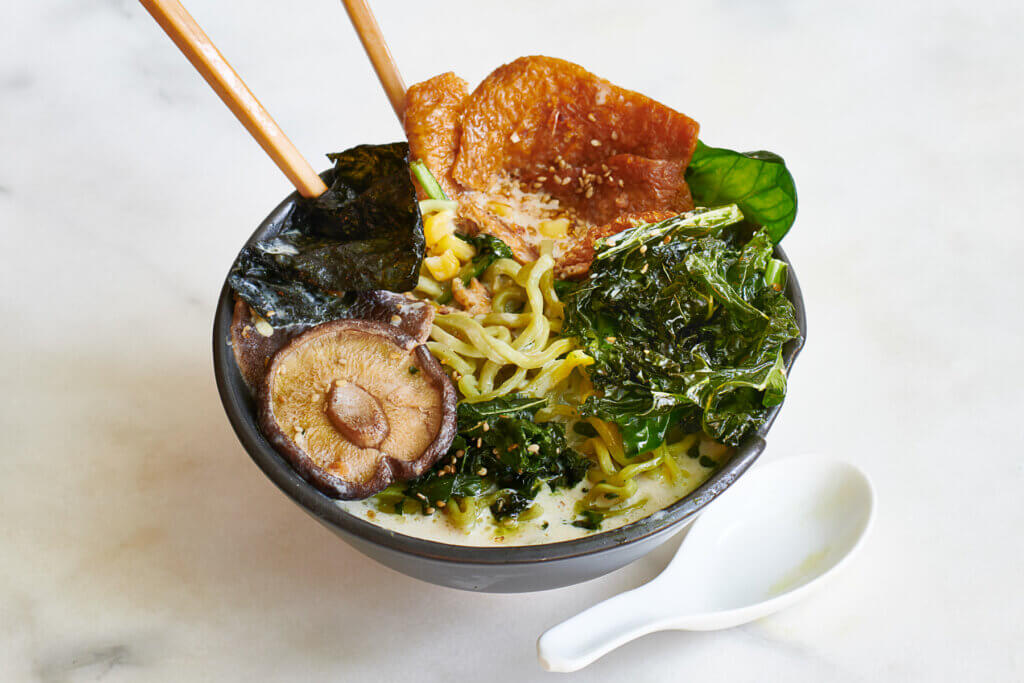
| Ingredients | Steps |
|---|---|
| – Ramen noodles – Broth (chicken, pork, or miso base) – Toppings (chashu pork, soft-boiled egg, green onions) – Optional: seaweed, corn, bamboo shoots | 1. Begin by preparing the broth. Choose between a chicken, pork, or miso base, depending on your preference. 2. Cook the ramen noodles according to the package instructions. Drain and set aside. 3. Assemble the toppings, which can include chashu pork (sliced pork belly), soft-boiled egg, chopped green onions, and any other desired toppings. 4. In individual serving bowls, ladle the hot broth over the cooked ramen noodles. 5. Arrange the toppings on the surface of the broth and noodles. 6. If desired, garnish with seaweed, corn, bamboo shoots, or any other toppings that appeal to you. 7. Savor the umami-rich flavors of ramen, enjoying the interplay of textures and the comforting warmth of the broth. |
5. Okonomiyaki Wonder
Okonomiyaki, often referred to as a Japanese savory pancake, is a canvas of creativity where batter, cabbage, and various fillings come together to create a flavorful dish. The name “okonomiyaki” translates to “grilled as you like it,” highlighting its customizable nature.
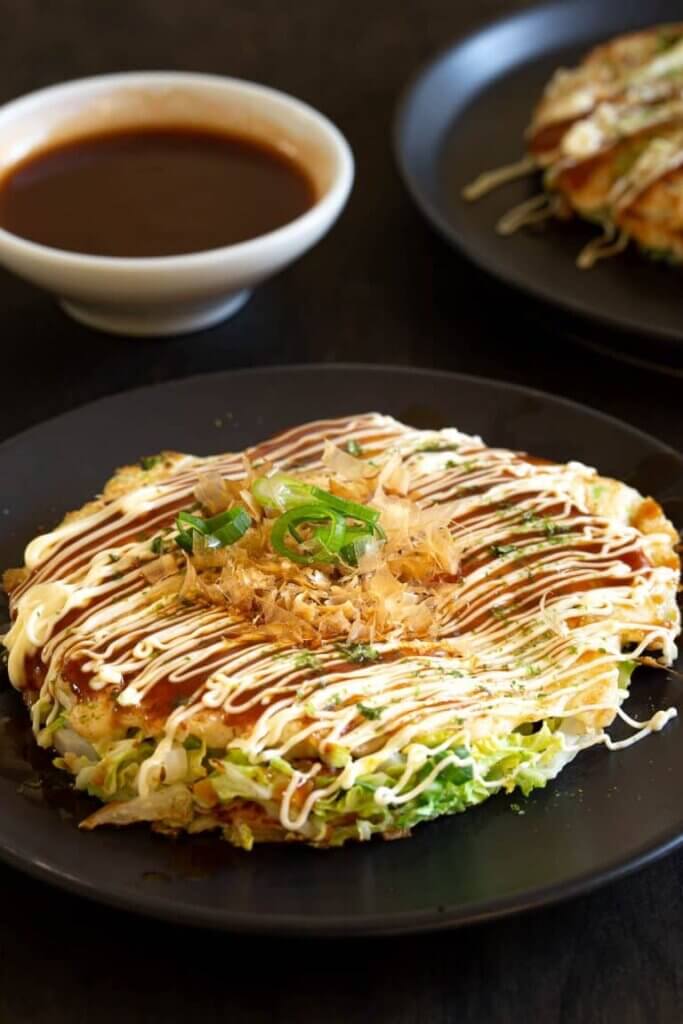
| Ingredients | Steps |
|---|---|
| – Cabbage – Flour – Eggs – Pork belly (optional) – Okonomiyaki sauce – Mayonnaise – Bonito flakes (optional) | 1. Thinly slice the cabbage and set it aside. 2. In a bowl, whisk together flour, eggs, and water to create the batter. The consistency should be similar to pancake batter. 3. Mix the sliced cabbage into the batter until well coated. 4. Heat a non-stick skillet or griddle over medium heat. If using pork belly, lay it flat on the skillet and pour a portion of the cabbage batter over it. 5. Once the edges of the okonomiyaki start to set, flip it carefully using a spatula. Cook until both sides are golden and crispy. 6. Once cooked, transfer the okonomiyaki to a plate and drizzle it with okonomiyaki sauce and mayonnaise in a crisscross pattern. 7. Optionally, sprinkle bonito flakes over the top for an extra layer of flavor and visual appeal. 8. Slice the okonomiyaki into wedges and savor the combination of textures and flavors. |
6. Gyoza Delicacy
Gyoza, the Japanese version of dumplings, is a delightful blend of flavors and textures. With a thin wrapper encapsulating a savory filling, these pan-fried or steamed dumplings are a treat for both the palate and the senses.
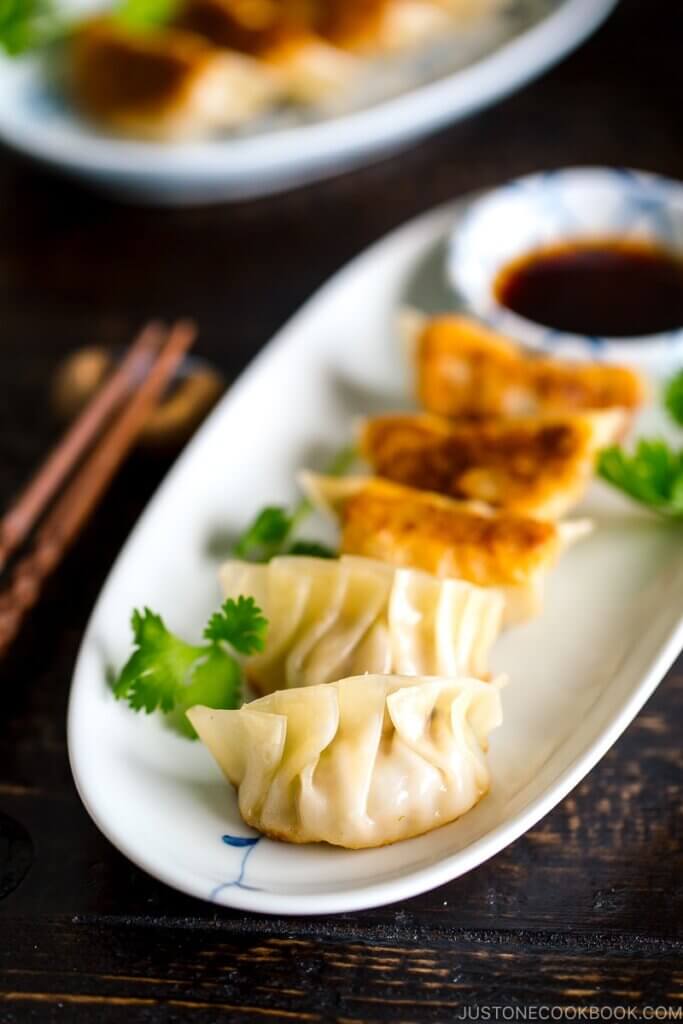
| Ingredients | Steps |
|---|---|
| – Gyoza wrappers – Ground pork – Cabbage – Garlic – Ginger – Soy sauce | 1. Finely chop the cabbage, garlic, and ginger. Mix them with the ground pork and soy sauce to create the filling. 2. Place a gyoza wrapper in the palm of your hand and add a small spoonful of filling to the center. 3. Moisten the edges of the wrapper with water and fold it in half to create a half-moon shape. 4. Use your fingers to pleat and seal the edges of the gyoza. Repeat until all the filling is used. 5. Heat a non-stick skillet over medium heat and add a small amount of oil. 6. Arrange the gyoza in the skillet, flat side down, and cook until the bottoms are golden and crispy. 7. Carefully add water to the skillet until it reaches about a quarter of the way up the gyoza. Cover with a lid to steam. 8. Once the water has evaporated and the gyoza are fully cooked, remove the lid and let them cook for a few more minutes to regain crispiness. 9. Serve the gyoza with a dipping sauce made from soy sauce and rice vinegar. |
7. Sukiyaki Serenity
Sukiyaki is more than a meal; it’s a communal experience that brings people together around a simmering hot pot. This dish features thinly sliced beef, tofu, and a variety of vegetables, all cooked in a sweet soy-based broth.
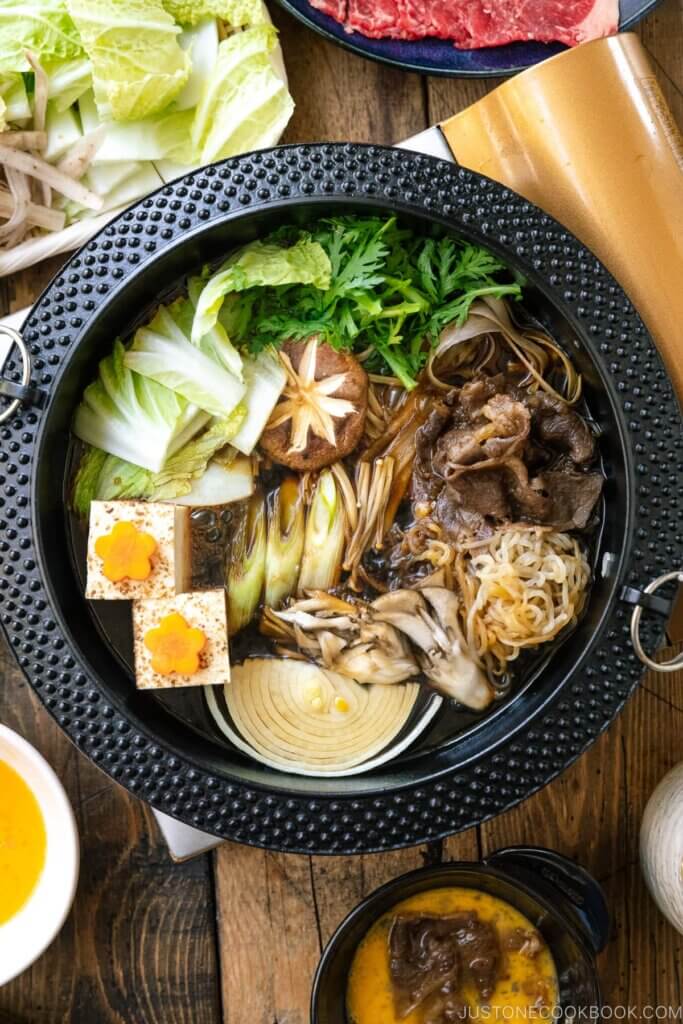
| Ingredients | Steps |
|---|---|
| – Thinly sliced beef – Tofu – Vegetables (nappa cabbage, mushrooms) – Soy sauce – Sugar – Mirin | 1. Heat a sukiyaki pot or large skillet over medium heat. 2. Add a small amount of oil and sauté the vegetables until they start to soften. 3. Push the vegetables to the sides of the pot and add the thinly sliced beef to the center. 4. As the beef cooks, mix soy sauce, sugar, and mirin to create the sukiyaki sauce. Pour it over the beef. 5. Add tofu to the pot and gently pour more of the sukiyaki sauce over the ingredients. 6. As the beef cooks and the flavors meld, use chopsticks to pick up the cooked ingredients and dip them in beaten raw egg before eating. 7. Continue cooking and enjoying the flavors, adding more ingredients and sukiyaki sauce as needed. 8. When the ingredients are cooked to your desired level of doneness, ladle the sukiyaki into individual bowls and enjoy the warm and comforting experience. |
8. Miso Magic
Miso, a traditional Japanese seasoning, adds depth and umami to various dishes. Miso soup, a staple in Japanese households, exemplifies this seasoning’s versatility and appeal.
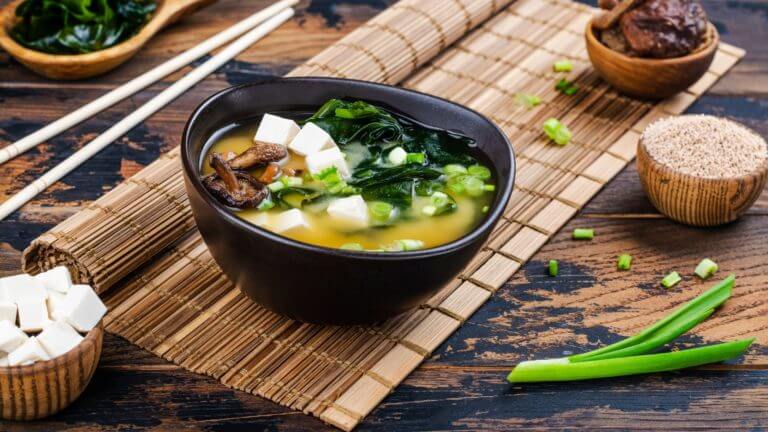
| Ingredients | Steps |
|---|---|
| – Miso paste – Dashi (fish stock) – Tofu – Green onions | 1. In a pot, prepare dashi by dissolving dashi granules or making dashi stock from kombu and bonito flakes. 2. Cut tofu into small cubes and finely chop green onions. 3. Once the dashi is ready, lower the heat and add the tofu cubes. 4. Take a small amount of miso paste and dissolve it in a ladleful of dashi before adding it back to the pot. This prevents the miso from clumping. 5. Stir gently to dissolve the miso into the soup, but do not let it come to a boil. 6. Add chopped green onions and let the flavors meld for a few minutes. 7. Ladle the miso soup into bowls and savor the umami-rich broth that warms the body and soul. |
9. Matcha Marvel
Matcha, finely ground green tea powder, isn’t just for tea – it’s a versatile ingredient that adds a distinctive flavor and vibrant green hue to various dishes.

| Ingredients | Steps |
|---|---|
| – Matcha powder – Hot water – Milk – Sweetener (optional) | 1. In a bowl, whisk matcha powder with a small amount of hot water to create a smooth paste. 2. In a separate cup or mug, heat milk until warm. You can use a milk frother or stovetop for this step. 3. Pour the warm milk over the matcha paste and stir gently to combine. 4. Add sweetener if desired, adjusting the amount to your taste. 5. Use a whisk or spoon to create a frothy layer on top. 6. Savor the rich and earthy flavors of matcha in the form of a comforting latte. |
10. Yakitori Yum
Yakitori, a beloved Japanese street food, consists of skewered and grilled chicken pieces that are flavorful and juicy. This dish encapsulates the essence of simplicity and deliciousness.
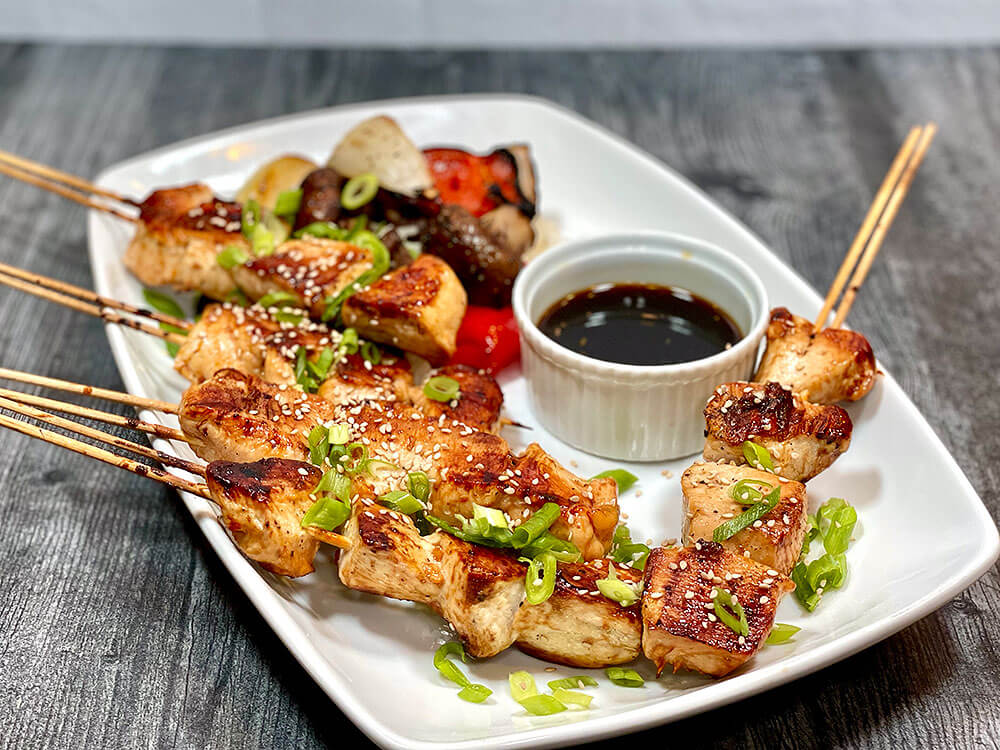
| Ingredients | Steps |
|---|---|
| – Chicken pieces (thighs, breast) – Yakitori sauce (soy sauce, mirin, sugar) | 1. Cut the chicken into bite-sized pieces, removing excess fat and skin. 2. Thread the chicken onto skewers, ensuring even cooking and leaving some space between pieces. 3. In a small saucepan, mix soy sauce, mirin, and sugar to create the yakitori sauce. Heat until the sugar dissolves. 4. Preheat a grill or grill pan over medium-high heat. 5. Place the skewers on the grill and brush them with the yakitori sauce. 6. Grill the skewers, turning and basting occasionally, until the chicken is cooked through and has a caramelized glaze. 7. Serve the yakitori skewers with a drizzle of extra sauce and perhaps a sprinkle of sesame seeds. 8. Enjoy the smoky and savory flavors of this quintessential Japanese street food. |
Conclusion: Embracing the Culinary Tapestry of Japan
As we conclude our culinary journey through the enchanting world of Japanese cuisine, we’ve embarked on a captivating adventure that has transported us to the heart of Japan’s diverse gastronomy. From the delicate art of crafting sushi to the comforting warmth of a bowl of miso soup, each recipe has offered a glimpse into the rich tapestry of flavors, traditions, and innovation that define Japanese cooking.
Through the sizzle of tempura, the umami of teriyaki, and the harmony of sukiyaki, we’ve explored the delicate balance that Japanese dishes achieve – a balance between textures, flavors, and visual aesthetics that reflect the very essence of this remarkable cuisine.
With each recipe, we’ve not only learned the techniques behind these dishes but also gained a deeper appreciation for the cultural significance they hold. Japanese cooking is an art that embraces simplicity, precision, and respect for ingredients, making every meal an experience that engages the senses and nourishes the soul.
As you continue your culinary exploration, remember that Japanese cuisine is more than just recipes; it’s an invitation to embrace a different way of cooking and eating, to celebrate the beauty of seasonal ingredients, and to share the joy of creating and savoring with loved ones.
So, whether you’re savoring the delicate rolls of sushi, the rich broths of ramen, or the sizzle of yakitori, know that you’re not just preparing a meal – you’re embarking on a culinary journey that allows you to experience the soul of Japan from the comfort of your own kitchen. Here’s to many more delicious adventures ahead as we continue to explore the global gastronomy that unites us all. Kanpai!




